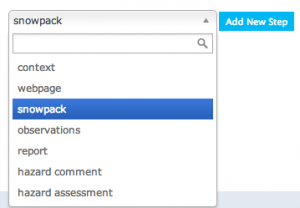Difference between revisions of "Creating a workflow template"
Jump to navigation
Jump to search
| Line 71: | Line 71: | ||
|} | |} | ||
|- | |- | ||
| − | + | |] | |
==Details of: Types of workflow steps and the information required to set them up== | ==Details of: Types of workflow steps and the information required to set them up== | ||
| + | {| | ||
|class="StepNum" | Context: | |class="StepNum" | Context: | ||
|A 'context' step provides information about the workflow itself and offers a place to record the following information: | |A 'context' step provides information about the workflow itself and offers a place to record the following information: | ||
Revision as of 16:28, 23 October 2013
| REQUIREMENTS | |
| Permission | Operation administrator and higher |
| Connectivity | Online and partial offline |
This document describes how to create a workflow in the infoex system.
Background
A workflow links together user-specified tasks into a logical order so that users can repeatedly move through the same steps. Creating a workflow consists of two main tasks:
- Defining the workflow name and choosing its general features
- Adding at least one workflow step
Step-by-step description
| 1. | login to the infoEx system with an account that has Operation Administrator privileges. | |||||||||||||||
| 2. | if you are enabled in more than one operation you must select an operation on the first screen after logging in. | |||||||||||||||
| 3. | TASK 1: Create a new workflow
| |||||||||||||||
| 4. | TASK 2: Add a step to the new workflow.
| |||||||||||||||
]
Details of: Types of workflow steps and the information required to set them up
Related documents
Functionality tested by
|
